INSTITUT SUPERIEUR D'ANTHROPOLOGIE
INSTITUTE OF ANTHROPOLOGY
ONLINE COURSES / COURS A DISTANCE
DEBUT COURS : AVRIL 2023
REGISTER NOW
CHINE – 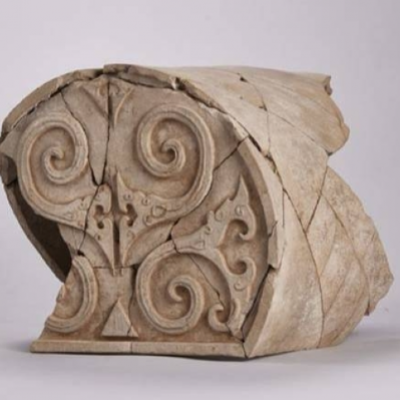 Yueyang - Archeologists have excavated the foundations of two palace buildings that could be dated back to more than 2,000 years ago in northwest China's Shaanxi Province.
Yueyang - Archeologists have excavated the foundations of two palace buildings that could be dated back to more than 2,000 years ago in northwest China's Shaanxi Province.
Some semi-circular eaves tiles were unearthed, which provided evidence for the discussion of the use of ancient eaves tiles. Archeologists said that the buildings were part of Yueyang, a capital city of the Qin state in the Warring States Period (475 BC-221 BC). According to researcher Liu Rui, the two buildings were rectangular and facing south. He added that the excavation for the first time gave an overall picture of the layout of important palace buildings inside the capital city's central areas between the mid-Warring States Period and the early Western Han Dynasty (202 BC-25 AD). Archeologists discovered the first ancient city complex in the 1980s, and the second and the third ones after 2012. The two buildings belonged to the No.3 complex.
https://www.gulf-times.com/article/655880/international/china/two-2000-year-old-palace-buildings-excavated-in-china
POLOGNE – Oświęcim - A mikveh dating to the 18th or 17th centuries was discovered in the Polish city of Oświęcim. Oświęcim is the Polish name for a place that is far better known for its German name, a name that will live in infamy forever: Auschwitz. Jews first came to settle in Poland in the early 1200s, according to MyJewishLearning, and, as Heritage Daily notes, first settled in Oświęcim in the 1500s. The wooden mikveh, a bath used in Jewish religious life for purposes of ritual purity, was discovered along with other artifacts that dated to the middle ages. Fortunately for the archaeologists, the mikveh was found in excellent condition, an occurrence that is not a given, especially in regard to ancient wooden structures which are susceptible to rot and decay. Archaeologists believe the mikveh was discovered in such a well-preserved state because water prevented oxygen, and therefore fungi, from reaching the wooden structure. According to Jewish law, it is not permissible to use simply any water in a mikveh. The Torah describes “living water” or “freshwater” which is supplied from a clean, natural source such as a river, spring or cistern of rainwater. In Oświęcim, there are abundant sources of water, such as the Vistula River, which may have fed this particular mikveh.
https://www.jpost.com/judaism/article-732128
ISRAEL – 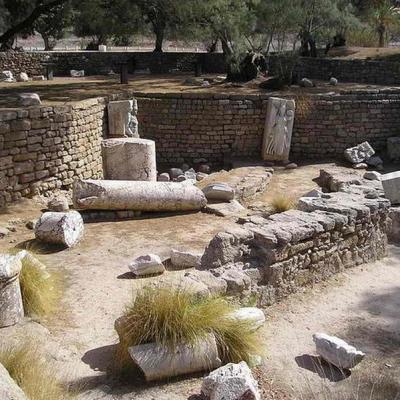
 Ashkelon - The Roman Empire is often heralded as one of the greatest societies to ever exist. Roads, bound books, concrete, and sewers are just a few of the wonderfully essential things that the Romans contributed to society. Some aspects of Roman civilization, however, weren't quite so civil. One horrific example of this comes in the form of 100 or more infant skeletons found underneath a Roman bathhouse in Israel. This chilling find is evidence of a brutal practice we've thankfully outgrown. Initially, the bones were believed to be chicken bones. However, it was later discovered that the bones were actually human –infant bones from the Roman era. With the remains amounting to more than 100 babies, it was the largest discovery of infant remains to date. Curious as to how and why these infants died, Voss took the remains to forensic anthropologist Professor Patrician Smith. Smith examined the infant remains and determined that there was no sign of illness or disease, and that the infants appeared to have been perfectly healthy when they died. She utilized a method of forensic testing that allowed her to determine that none of the infants had lived longer than a week before dying. During Roman times, it was not uncommon for infants to be killed as a form of birth control. It was not a crime, as newborn infants were viewed as being ‘not fully human’. In most cases, a Roman woman who did not want a newborn would engage in the practice of “exposure.” She would abandon the infant, either to be found and cared for by someone else, or to perish. According to the beliefs at the time, it was up to the gods to determine whether the infant would be spared or not. The most famous account of attempted infanticide, in which babies were left exposed to the elements, is the story of Romulus and Remus. As for these baby skeletons, archaeologists hypothesize that because they were buried near a bathhouse, these babies were born to prostitutes whose employers did not want them around.
Ashkelon - The Roman Empire is often heralded as one of the greatest societies to ever exist. Roads, bound books, concrete, and sewers are just a few of the wonderfully essential things that the Romans contributed to society. Some aspects of Roman civilization, however, weren't quite so civil. One horrific example of this comes in the form of 100 or more infant skeletons found underneath a Roman bathhouse in Israel. This chilling find is evidence of a brutal practice we've thankfully outgrown. Initially, the bones were believed to be chicken bones. However, it was later discovered that the bones were actually human –infant bones from the Roman era. With the remains amounting to more than 100 babies, it was the largest discovery of infant remains to date. Curious as to how and why these infants died, Voss took the remains to forensic anthropologist Professor Patrician Smith. Smith examined the infant remains and determined that there was no sign of illness or disease, and that the infants appeared to have been perfectly healthy when they died. She utilized a method of forensic testing that allowed her to determine that none of the infants had lived longer than a week before dying. During Roman times, it was not uncommon for infants to be killed as a form of birth control. It was not a crime, as newborn infants were viewed as being ‘not fully human’. In most cases, a Roman woman who did not want a newborn would engage in the practice of “exposure.” She would abandon the infant, either to be found and cared for by someone else, or to perish. According to the beliefs at the time, it was up to the gods to determine whether the infant would be spared or not. The most famous account of attempted infanticide, in which babies were left exposed to the elements, is the story of Romulus and Remus. As for these baby skeletons, archaeologists hypothesize that because they were buried near a bathhouse, these babies were born to prostitutes whose employers did not want them around.
https://historydaily.org/discovery-of-mass-baby-grave-under-roman-bathhouse
ISRAEL – 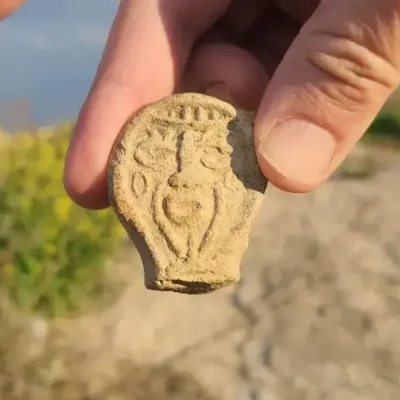 Tzur Yitzhak - Part of a Byzantine candle holder was found in the Israeli town of Tzur Yitzhak south of Modi'in on Saturday. Researchers at the IAA examined the item and determined that it is the decorative handle of a candle holder from the 6th or 7th century CE. "Although it is not a rare find," explained Kornfeld, "the item certainly is lovely. The clay lanterns were used for lighting, and are a typical find for those periods. However, not every lantern had a handle, and certainly not a[n intricately] designed one. The candle holder this belonged to was used for the function of light, but also as an ornamental object."
Tzur Yitzhak - Part of a Byzantine candle holder was found in the Israeli town of Tzur Yitzhak south of Modi'in on Saturday. Researchers at the IAA examined the item and determined that it is the decorative handle of a candle holder from the 6th or 7th century CE. "Although it is not a rare find," explained Kornfeld, "the item certainly is lovely. The clay lanterns were used for lighting, and are a typical find for those periods. However, not every lantern had a handle, and certainly not a[n intricately] designed one. The candle holder this belonged to was used for the function of light, but also as an ornamental object."
https://www.jpost.com/archaeology/article-732257
MEXIQUE – Mexico - The Metropolitan Cathedral was built over the course of centuries – in the period between 1573 and 1813, and it is not the first time that experts have found finds in the walls. Experts restoring the interior of the main Catholic cathedral in the capital of Mexico have discovered 23 lead boxes with religious inscriptions and relics such as small paintings, wooden or palm crosses, the Associated Press reported. The texts on the boxes are dedicated to saints. A handwritten note was also left in one of them, which gives reason to believe that they were found in 1810, after which they were buried again. The message said one of the boxes was found by masons and painters in 1810. The note asked anyone who found it to “pray for their souls”. The finds were in niches carved into the walls at the base of the cathedral’s windproof lantern, which tops the dome. They were covered with clay slabs and hidden under plaster.
https://www.europeantimes.news/2023/02/relics-in-23-lead-boxes-were-found-in-a-cathedral-in-mexicos-capital/
ARABIE SAOUDITE – 
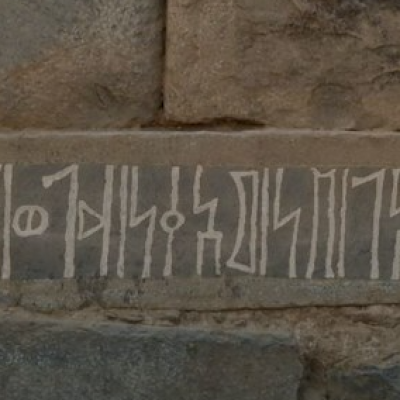 Al-Okhdood - The Heritage Commission announced the discovery of three gold rings, a bronze bull’s head and a southern Musnad inscription on a granite stone — all dating back to the pre-Islamic era — at Al-Okhdood, a village in Najran. Dr. Salma Hawsawi, an associate professor of ancient history at King Saud University, told Arab News that Najran was a compulsory stop for caravans traveling from the south of the Arabian Peninsula. “Two commercial routes branch out from it, one of which is towards the northeast, passing through the village of Al-Faw, and ends in the east of the Arabian Peninsula, while the second road heads north to reach Petra and from there to the cities of the Levant and Mesopotamia,” she said. The inscription is written with unique standing letters using an old South Arabian script, called Musnad. It is 230 cm long and approximately 48 cm high, with the length of the letters 32 cm, making it the longest Musnad inscription found in the region. It belonged to a former resident of Al-Ukhdood, Wahb El bin Maqen. “Commemorative inscriptions can be found across most of the Arabian Peninsula in great numbers, which reflects the advanced knowledge and cultural level that the society reached and how much it cared for writing and documenting.“The inscription also shows that watering was the profession of Wahb El, which consists of delivering water to the houses, including his own. It also shows the common Arabic names of that period, as the owner of the inscription mentions his and his father’s name,” Hawsawi noted. Another interesting discovery was the bronze bull’s head that had traces of oxidation, a natural reaction when bronze is exposed to air, creating a patina coating that can range in colors. “The bull head drawings and statues first started to emerge in the south of the Arabian Peninsula around the first millennium BC,” she said. It is said to have been a symbol of strength and fertility for pre-Islamic groups of South Arabians: Sabaeans, Minaeans, and Qatabanians. It was also known for its versatility in daily life, as it was used to plow the lands, its meat was eaten and its skin was used in various industries. It symbolizes the moon because of the resemblance of the bull’s horns to the crescent. According to the Hawsawi, the moon was called “Wad” by the Minaeans, and it was known to the Sabaeans and others as “Warkh,” “Al-Maqah,” “Shahr,”“Kahl” and “Sun” in Hadramout.
Al-Okhdood - The Heritage Commission announced the discovery of three gold rings, a bronze bull’s head and a southern Musnad inscription on a granite stone — all dating back to the pre-Islamic era — at Al-Okhdood, a village in Najran. Dr. Salma Hawsawi, an associate professor of ancient history at King Saud University, told Arab News that Najran was a compulsory stop for caravans traveling from the south of the Arabian Peninsula. “Two commercial routes branch out from it, one of which is towards the northeast, passing through the village of Al-Faw, and ends in the east of the Arabian Peninsula, while the second road heads north to reach Petra and from there to the cities of the Levant and Mesopotamia,” she said. The inscription is written with unique standing letters using an old South Arabian script, called Musnad. It is 230 cm long and approximately 48 cm high, with the length of the letters 32 cm, making it the longest Musnad inscription found in the region. It belonged to a former resident of Al-Ukhdood, Wahb El bin Maqen. “Commemorative inscriptions can be found across most of the Arabian Peninsula in great numbers, which reflects the advanced knowledge and cultural level that the society reached and how much it cared for writing and documenting.“The inscription also shows that watering was the profession of Wahb El, which consists of delivering water to the houses, including his own. It also shows the common Arabic names of that period, as the owner of the inscription mentions his and his father’s name,” Hawsawi noted. Another interesting discovery was the bronze bull’s head that had traces of oxidation, a natural reaction when bronze is exposed to air, creating a patina coating that can range in colors. “The bull head drawings and statues first started to emerge in the south of the Arabian Peninsula around the first millennium BC,” she said. It is said to have been a symbol of strength and fertility for pre-Islamic groups of South Arabians: Sabaeans, Minaeans, and Qatabanians. It was also known for its versatility in daily life, as it was used to plow the lands, its meat was eaten and its skin was used in various industries. It symbolizes the moon because of the resemblance of the bull’s horns to the crescent. According to the Hawsawi, the moon was called “Wad” by the Minaeans, and it was known to the Sabaeans and others as “Warkh,” “Al-Maqah,” “Shahr,”“Kahl” and “Sun” in Hadramout.
https://www.arabnews.com/node/2254821/art-culture
VIET NAM – 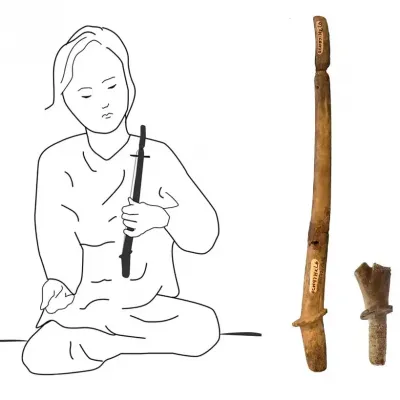
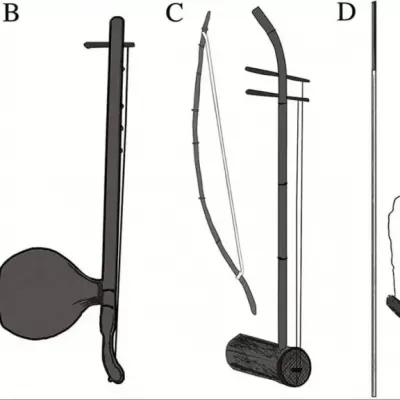 Mekong - Archaeologists unearth a 2,000-year-old stringed instrument made from deer antler in southern Vietnam. This unusual deer antler may be one of the oldest stringed instruments ever unearthed in Southeast Asia. The 2,000-year-old instrument, which resembles a single-stringed harp and was found at a site along the Mekong River. Fredeliza Campos from The Australian National University (ANU) said: “This stringed instrument, or chordophone, is one of the earliest examples of this type of instrument in Southeast Asia. It fills the gap between the region’s earliest known musical instruments – lithophones or stone percussion plates – and more modern instruments.” The antler most likely came from an Indian hog deer or a Sambar deer, both of which are indigenous to the continent of Southeast Asia. The team determined that the object was 2,000 years old and came from Vietnam’s pre-Óc Eo culture along the Mekong River, which is unusually early for this type of instrument.The artifact consists of a 35-centimeter-long piece of deer antler with a hole at one end for a peg, which was likely used to tune the string like the keys at the top of a guitar. While the string eroded away long ago, the object also features a bridge that was perhaps used to support the string. It’s unclear how the instrument was played or what it sounded like, but the researchers believe the methods were similar to those used for modern Vietnamese musical instruments like the K’ny.
Mekong - Archaeologists unearth a 2,000-year-old stringed instrument made from deer antler in southern Vietnam. This unusual deer antler may be one of the oldest stringed instruments ever unearthed in Southeast Asia. The 2,000-year-old instrument, which resembles a single-stringed harp and was found at a site along the Mekong River. Fredeliza Campos from The Australian National University (ANU) said: “This stringed instrument, or chordophone, is one of the earliest examples of this type of instrument in Southeast Asia. It fills the gap between the region’s earliest known musical instruments – lithophones or stone percussion plates – and more modern instruments.” The antler most likely came from an Indian hog deer or a Sambar deer, both of which are indigenous to the continent of Southeast Asia. The team determined that the object was 2,000 years old and came from Vietnam’s pre-Óc Eo culture along the Mekong River, which is unusually early for this type of instrument.The artifact consists of a 35-centimeter-long piece of deer antler with a hole at one end for a peg, which was likely used to tune the string like the keys at the top of a guitar. While the string eroded away long ago, the object also features a bridge that was perhaps used to support the string. It’s unclear how the instrument was played or what it sounded like, but the researchers believe the methods were similar to those used for modern Vietnamese musical instruments like the K’ny.
https://arkeonews.net/southeast-asias-oldest-stringed-instrument-may-be-a-2000-year-old-antler/
PHILIPPINES –  Cebu – The Municipality of Daanbantayan in northern Cebu will conduct a salvage archeology to gather more data and materials from the site where human remains and artifacts thought to date from the Yuan or Ming Dynasty, around 600 to 700 years ago, were discovered. “What I found there was not one set of human remains but probably two that were accidentally removed last week. The same workers also found one other set of incomplete human skeletal remains that were placed in a sack. This third one had actually been found months earlier when the porte cochere or entrance canopy of the cultural center was constructed. Apparently this one was put in a sack and reburied perhaps months or a few years ago,” Bersales said. “The big earthenware pot was broken in three or four parts. It supposedly contained shells, according to those who removed the pot. I also found broken fragments of Longquan celadon... which most probably date either to the Yuan Dynasty or the early part of the Ming Dynasty (about 1300s-1450s) or about 600-700 years ago. There were also sherds or broken fragments of blue and white porcelain which may also date to the same period,” he added.
Cebu – The Municipality of Daanbantayan in northern Cebu will conduct a salvage archeology to gather more data and materials from the site where human remains and artifacts thought to date from the Yuan or Ming Dynasty, around 600 to 700 years ago, were discovered. “What I found there was not one set of human remains but probably two that were accidentally removed last week. The same workers also found one other set of incomplete human skeletal remains that were placed in a sack. This third one had actually been found months earlier when the porte cochere or entrance canopy of the cultural center was constructed. Apparently this one was put in a sack and reburied perhaps months or a few years ago,” Bersales said. “The big earthenware pot was broken in three or four parts. It supposedly contained shells, according to those who removed the pot. I also found broken fragments of Longquan celadon... which most probably date either to the Yuan Dynasty or the early part of the Ming Dynasty (about 1300s-1450s) or about 600-700 years ago. There were also sherds or broken fragments of blue and white porcelain which may also date to the same period,” he added.
https://www.sunstar.com.ph/article/1953916/cebu/local-news/archeologist-more-digging-at-site-where-human-bones-artifacts-found